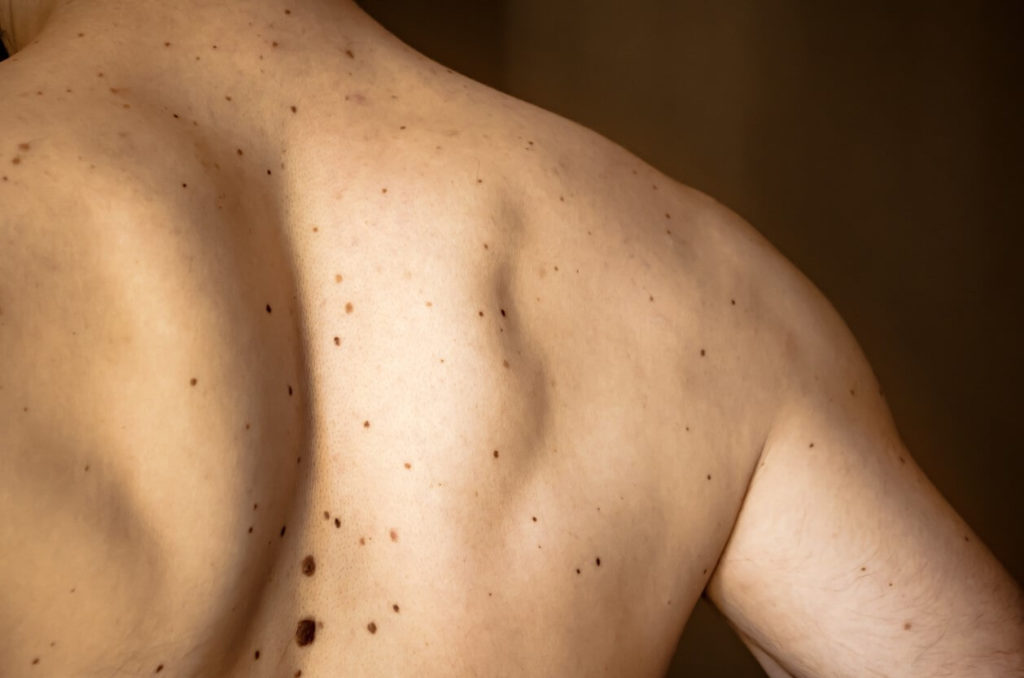Skin cancer: symptoms and causes?
Written by: Loris Vitry (holistic coach)
Validated by: Cathy Maillot (Osteopath)
Caution: If you have any medical questions or concerns, please speak to your doctor. Even if the articles on this site are based on scientific studies, they do not replace professional medical advice, diagnosis or treatment.

Usually, the manifestations of skin cancer are not easily seen.
In fact, most often, the affected person does not feel pain or itching, let alone bleeding.
It is a very common form of cancer in the world today.
The causes are diverse as are the manifestations.
In this article you will learn all about the causes and symptoms of skin cancer.
What are the causes of skin cancer?
Several risk factors can be cited when it comes to discussing the causes of skin cancer.
Exposure to sunlight
Exposure to sunlight is definitely one of the main factors that can cause skin cancer.
This is particularly valid for basal cell as well as squamous cell cancers.
Ultraviolet exposure ultimately damages the DNA in skin cells.
All types of cancer are caused by DNA damage.
This exposure to the sun’s rays can be direct as it can be indirect.
We speak of indirect exposure when, for example, the sun’s rays are reflected by sand, water, mirrors, ice etc.
In addition, exposure to the sun is more intense in certain places such as the mountains, the beach …
The sun’s rays are very powerful.
Indeed, they penetrate even light clothing.
In some countries there are generally more cases of skin cancer due to the intensity of the sun.
This is the case with the United States, specifically Texas.
We note, however, that people who were very exposed to the sun during their childhood are at greater risk of developing skin cancer.
In addition, the finding is that people are more exposed to sunlight before the age of 18.
Ionizing radiation
People who have had radiation therapy in the past are at greater risk of developing skin cancer.
Cancer may appear 15 to 20 years after radiation therapy.
Work with certain products
When you work with certain products such as charcoal, tar, bedded clay, industrial pitch, chimney amm, you are more exposed to skin cancer.
A weakened immune system
People with weakened immune systems are at high risk of getting skin cancer other than melanoma.
These are often people who have had an organ transplant and need to take certain medicines to strengthen their immune system.
The fall in the immune system can also be caused by stress.
Xeroderma pigmentosum
It is a kind of inherited skin condition that prevents the skin from repairing damage caused by the sun’s rays.
When a person has this condition, their vulnerability to UV rays increases.
This usually causes a change in skin color and premature aging.
They are also at risk of developing skin cancer.
Certain drugs
Antibiotics, hormones or even antidepressants can make the skin very sensitive, especially to ultraviolet rays.
Which can increase the risk of skin cancer.
Arsenic
Contact with arsenic can increase the risk of skin cancer.
It is a substance found in rock and soil.
As a result, arsenic and the substances that contain it are very harmful to the skin and can cause cancer.
Personal history of skin cancer
People who have had skin cancer, such as melanoma, are also at high risk for a relapse or may come into contact with another type of skin cancer.
Family history of skin cancer
If at least one of your parents has had skin cancer in the past, your risk of developing melanoma is greater.
This can be caused by similar sun exposure patterns in the family.
In addition, genetic mutations can be the cause, although this is quite rare.
Symptoms of skin cancer
Skin cancer is usually noticed as an abnormal area of skin or a change in the skin anywhere on the body.
Symptoms quite often depend on the type of cancer.
For the types of skin cancer other than melanoma we have: basal cell carcinoma (BBC) and squamous cell carcinoma (SCC), which are the most common types of cancer apart from melanoma.
Basal cell carcinoma
The face and neck are the most common areas for basal cell carcinoma.
The nose is the specific area where 30% of this type of cancer is located.
The cheeks, forehead, and eye area are the other most common areas after the nose.
This type of cancer is therefore manifested by the following signs:
- A flesh-colored or pink bump on the face, ears or neck.
- It may be a pink, smooth plaque visible on the chest or back.
- An ulcer that cannot be healed.
- A bleeding lesion.
- An itchy lump or area.
- Raised, scaly red patches.
Squamous cell carcinoma
This type of skin cancer manifests itself in particular by:
- The appearance of a pinkish or whitish patch of skin that is either dry or rough.
- A pinkish or whitish nodule that is firm and viscous.
- An ulcer that does not heal.
Usually, this type of skin cancer develops on a keratosis which is a small lesion that is hard to the touch.
It usually measures a few centimeters in diameter.
Melanoma
The most famous type of skin cancer, melanoma manifests itself by the following signs:
- A mole that can change color and size and has a regular outline.
- A mole that can bleed and in which we can see areas of white, red or blue.
- A black lesion present on the skin or on a mucous membrane.
It should be noted that melanoma can appear in any area of the body.
However, in men it appears more often on the back while in women it is more often seen on one of the legs.
Continue reading:
How to stop being afraid of the future?

